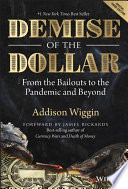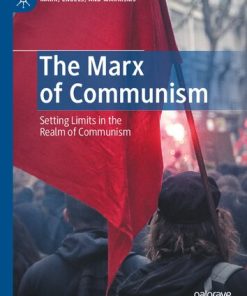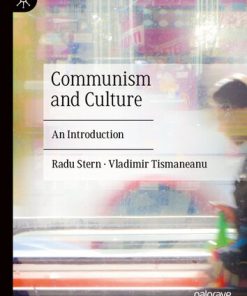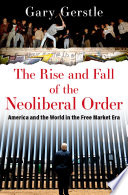The Rise and Demise of World Communism George W Breslauer
$50.00 Original price was: $50.00.$25.00Current price is: $25.00.
The Rise and Demise of World Communism – Ebook Instant Download/Delivery ISBN(s): 9780197579671,0197579671,9780197579695, 0197579698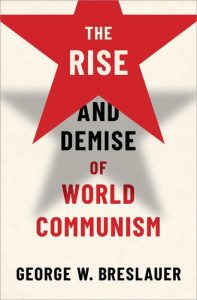
Product details:
- ISBN 10: 0197579698
- ISBN 13: 9780197579695
- Author:George W Breslauer
A concise, readable, and novel interpretation of the history of communist states.Sixteen states came to be ruled by communist parties during the 20th century. One, the Soviet Union, was geographically the largest nation in the world and a superpower. Another, China, had the world’s largest population. At communism’s high point, its adherents envisioned global triumph. Today, however, only five communist regimes remain in power. Why?In The Rise and Demise of World Communism, George Breslauer, a specialist who has spent decades observing the evolution of communist states, provides a sweeping history of the world communist movement, focusing in particular on what communist states shared in common and why they began to differ from each other over time. Throughout, Breslauer explores the relations among communist states as well as the relations between those states and the world of increasingly affluent, and militarily formidable, democratic-capitalist powers. He finds that these regimes all came to power in the context of warfare or its aftermath, followed by the consolidation of power by a revolutionary elite that valued “revolutionary violence” as the preferred means to an end, based upon Marx’s vision of apocalyptic revolution and Lenin’s conception of party organization. As Breslauer shows, all these regimes went on to “build socialism” according to a Stalinist template and were initially dedicated to “anti-imperialist struggle” as members of a world communist movement. But their common features gave way to diversity, difference, and defiance after the death of Joseph Stalin in 1953. For many reasons, and in many ways, those differences soon blew apart the world communist movement and eventually led to the collapse of European communism. Even though a few communist regimes still remain in power, the dream of world communism is dead. But the future of the remaining communist regimes is uncertain.An accessible history of one of the most important political phenomena of the past 150 years, The Rise and Demise of World Communism provides readers with a crisp account of the entire movement–from the theories of Marx and Lenin to the on-the-ground policies of Stalin, Mao, Gorbachev, Deng, and other communist leaders-that culminates in our own era.
Table contents:
Part I. General Patterns in World Communism
1. What Did Communist Regimes Have in Common?
2. How Did Communist Regimes Differ from Each Other?
3. The World Communist Movement: From Moscow-Centric to Pluralistic
Part II. Ideology and Organization: The Heritage
4. Marxism: The Vision
5. Leninism: The Instrument
Part III. Coming to Power and “Building Socialism” in Russia
6. The Bolshevik Seizure of Power
7. Consolidating Bolshevik Power
8. Respite
9. Building Socialism: Stalin’s Revolution from Above
10. The Great Terror and Stalinist Despotism
11. Was Stalinism a Logical Continuation of Marxism, Leninism, or Neither?
12. Was Stalin’s Revolution from Above a Rational Strategy of Modernization?
13. Stalinism and World Communism in the 1930s
14. The Impact of World War II on the Soviet Union and World Communism
Part IV. The Stalinist Model Spreads Westward and Eastward
15. The Creation of East European Communist States
16. Origins and Entrenchment of the Cold War, 1945–1953
17. World War II and the Creation of Asian Communist States: The People’s Republic of China
18. Consolidating Power and “Building Socialism” in China
19. Communist Parties Come to Power in Korea and Vietnam
Part V. After Stalin: From Similarity to Difference
20. What Follows Stalinism in the USSR?
21. Diversity and Defiance within the World Communist Movement
22. “Building Communism”: Competition for Ideological “Correctness” within the World Communist Movement
23. The Sino-Soviet Schism, 1957–1963
24. Cuba’s Indigenous Revolution, 1959–1970
25. The Soviet Union after Khrushchev: Bureaucratic Leninism
26. Alternatives to Utopia in China, 1960–1965
27. The Great Proletarian Cultural Revolution, 1966–1969
28. Maoism: An Accounting
Part VI. The Realignment of International Relations: From Proletarian Internationalism to Pragmatism
29. The Collapse of the World Communist Movement and the Rise of Détente
30. Why US-Soviet Détente Failed
31. The Soviet Invasion of Afghanistan, December 1979
Part VII. The Collapse of European Communism
32. Varieties of Opposition to Bureaucratic Leninism in Eastern Europe, 1968–1985
33. Gorbachev’s Peaceful Revolution from Above
34. Gorbachev and the Abandonment of Anti-Imperialist Struggle
Part VIII. The Remains of Communism in a Postcommunist World
35. From Maoism to Market Leninism: The Chinese Economic Miracle after Mao
36. China in a Postcommunist World: Can Leninism Survive Market Leninism?
37. Market Leninism in Vietnam
38. Market Leninism in Laos
39. Bureaucratic Leninism in Cuba
40. Stalinism in North Korea
Part IX. Conclusions
41. Why the Drive to Difference?
42. Assessing the Communist Experience: Tragedy or Achievement?
43. Is There a Future for New Communist States?
People also search:
the rise and demise of world communism pdf
what was the cause of the collapse of communism
the rise and fall of communism
the rise and fall of communism summary
the rise of communism after ww2
You may also like…
Politics & Philosophy - Politics
The Marx of Communism: Setting Limits in the Realm of Communism 1st edition Alexandros Chrysis
Computers - Other
Politics & Philosophy - Politics
The Rise and Fall of the Neoliberal Order: America and the World in the Free Market Era Gary Gerstle
Uncategorized
Farmacología básica 5th Edition by George Brenner, Craig Stevens 0323391664 978-0323391665
Uncategorized
The Rise of Virtual Communities. In Conversation with Virtual World Pioneers 1st Edition
History - World History
History - American Studies





